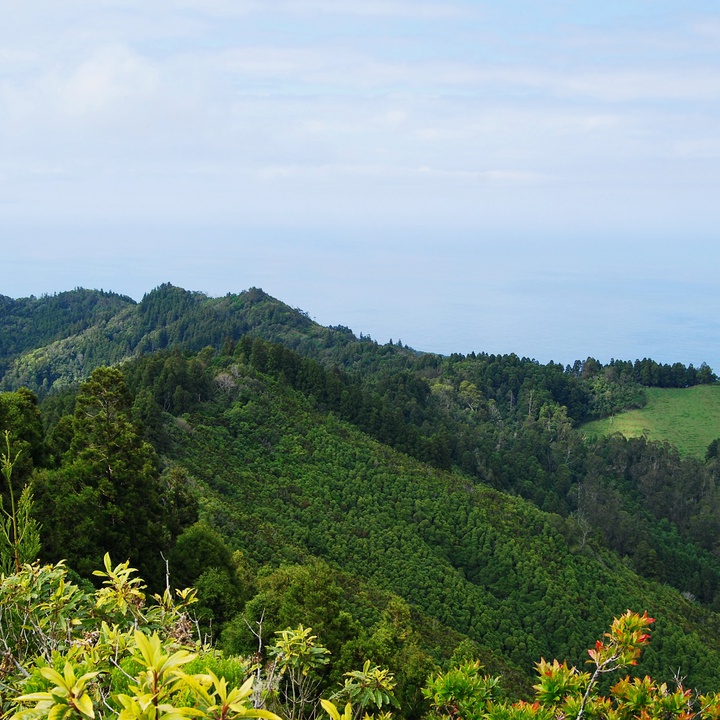Text size:
Pico Alto
Protected Area for the Management of Habitats or Species


With about 586.84 metres above sea level, Pico Alto is the highest point of Santa Maria and the ideal place to have an overview of the whole island.
This zone is a north-south mountainous alignment that divides the east part of the island (mountainous) from the west part (flattened and with less vegetation). Pico Alto is associated with a phase of intense fissural volcanic activity, which began at around 5 million years ago.
The protected area, with 121 hectares, is an important spot of the Laurel Forest vegetation, where is possible to find species such as Laurus azorica (louro-da-terra), Ilex azorica (azevinho), Vaccinium cylindraceum (uva-da-serra), Picconia azorica (pau-branco), Viburnum treleasei (folhado), Erica azorica (urze) and Platanthera micrantha (conchelo-do-mato).
The Pico Alto is one of the archipelago's diversity hotspots, where there are arthropods unique of Santa Maria and particularly of Pico Alto, which are examples the species Athous pomboi, Donus multifidus, Tarphius pomboi, Tarphius serranoi.
Regarding bird species, it is possible to observe the Fringilla coelebs moreletti (tentilhão), the Motacilla cinerea patriciae (alvéola), the Erithacus rubecula (pisco), the Turdus merula azorensis (melro), the Serinus canaria (canário-da-terra), the Sylvia atricapilla atlantis (toutinegra dos Açores) and the Regulus regulus sanctaemariae (estrelinha de Santa Maria), an endemic subspecies that only occurs on Santa Maria.
The Pico Alto (PRC02SMA) and the Great Route of Santa Maria (GR01SMA) walking trails allow crossing this protected area, with several natural viewpoints that offer views of the Barreiro da Faneca Protected Landscape Area, the Ilhéu da Vila Nature Reserve and the Pedreira do Campo, do Figueiral e Prainha Natural Monument.

